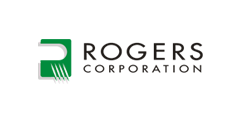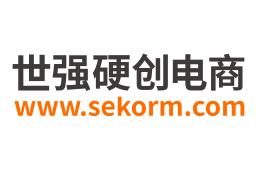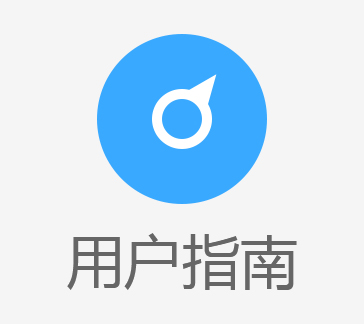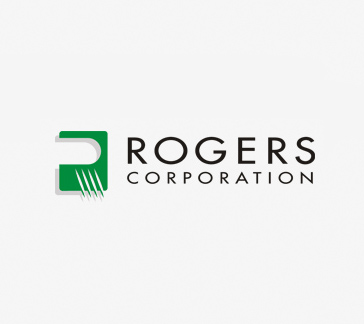Applications for Metallized Ceramic Substrates




Each application comes with its own specific requirements for the multi-chip power modules, hence the variety of substrates inside the modules. Among other measures, voltage, current, and mission profile are critical parameters to consider in the selection of the substrate for a given application. In this blog, we look at common applications for multi-chip power modules to understand the rationale behind each technology.
Direct Bonded Copper (DBC) and Active Metal Brazed (AMB) ceramic substrates are used in multi-chip modules for electric power conversion in order to convert:
Rectifier——Alternating current (AC) to direct current (DC)
Inverter——Direct current (DC) to alternating current (AC)
DC-to-DC Converter——Direct current (DC) from one voltage level to another
AC-to-AC Converter——Alternating current (AC) from one waveform to another with a different output voltage and frequency
Industrial equipment
Motor drives are indispensable in industrial applications and automation systems which require motion in precise control, a swift response to the command, and an exact fidelity to position requirements (such as robots, machine tools, forklifts, elevators). By varying the frequency and voltage of the power supply to an electrical motor the drive can control speed and torque.
For more than 30 years IGBT power modules with alumina (Al2O3 ) DBC substrates were developed to address the needs of motor drives. The primary function of Al2O3 DBC substrates is to carry multiple chips, interconnect the chips to realize an electrical circuit and provide electrical isolation. Their high ampacity, owed to their thick copper metallization, make them the best choice for power conversion. In addition, they provide a low thermal resistance to dissipate semiconductor losses. Finally, reliable materials such as Al2O3 DBC substrates improve the lifetime of modules because their coefficient of thermal expansion (CTE) matches the CTE of the semiconductor devices.
For high power modules, multiple DBC substrates are usually attached to a baseplate. This baseplate is typically made of copper and provides an additional heat capacity for applications where surge currents are expected. However, the stress resulting from the different CTE of the baseplate and substrates may lead to solder fatigue and delamination. Especially in cases when modules are exposed to thermal cycles. Depending on their duration and repetition, such cycles can significantly affect the lifetime of modules. Therefore, modules without a baseplate may be the better choice if heat capacity is not an issue. At any rate, large-scale production of Al2O3 DBC substrates enables an attractive price-performance ratio for most industrial applications.
Consumer
Inverters can be found in home appliances to control compressor motors, fan motors, and drum motors in air conditioners, refrigerators, and washing machines. For many years the power conversion job has been done with discrete devices because this solution was cheap and sufficient. However, increasing requirements regarding efficiency, controllability, and miniaturization have led system manufacturers to adopt small-size multi-chip modules. They are produced from multiple manufacturers in standard footprints and are more reliable than existing solutions with discrete devices. This market segment remains very cost-sensitive. Therefore, these modules are produced with either insulated metal substrates (IMS) or alumina (Al2O3 ) DBC substrates depending on the rated current and input voltage since these substrates deliver the best price-performance ratio.
New Energy
Power modules are widely used in applications that convert clean energy, such as photovoltaic and wind energy, into usable commercial power. While both renewable energy sources require a very high conversion efficiency, other requirements differ.
On one hand, photovoltaic inverters require high robustness regarding humidity and low system cost but have low demand on power cycling since they are typically always on. The output power starts at few kilowatts for residential and commercial applications and extends into the megawatt range for utility-scale plants. Discrete devices are preferred for applications below 10kW. Systems with higher output power are using power modules with and without a baseplate depending on the power range. Therefore, Al2O3 DBC substrates are again the best technology for these applications.
On the other hand, wind turbines are rated in the megawatt power range. Limited space leads to strong requirements regarding power density. In addition, power modules are operating under variable wind speed and experience large power cycling stresses but need to operate for up to 25 years without any failures. Therefore, high power modules with a baseplate have been developed with robust joining technologies and reliable materials such as zirconia doped Al2O3 DBC substrates to achieve the required lifetime.
Rail Traction
All trains require power inverters to drive the electric motor, but the number of inverters per train, voltage, and current varies depending on the type of trains (tramways, subways, regional or high-speed trains). Rail traction needs very high-power modules with voltage > 1.7kV and power ranging from 100kW to 1-2MW. A thick ceramic substrate is necessary to provide enough electrical isolation though this increases the thermal resistance. This can be offset by materials with better thermal conductivity. Therefore, thick (0.63mm and more) aluminum nitride (AlN) is usually the preferred material.
Automotive
Automotive is probably the most exciting opportunity for power electronics because the hybrid and electric vehicle market is expected to grow rapidly. Many new power module platforms are currently under development to address the needs of this market segment. However, there is no 'one size fits all solution and almost no standard package to cover the range of possible automotive applications.
Al2O3 and zirconia doped Al2O3 DBC substrates are enough for low voltage applications below 60V, such as belt starter generators in mild hybrid vehicles. Although, with increasing levels of electrification, not only the output power but also the requirements regarding power density, power cycling, and robustness are increasing. Consequently, new materials and joining technologies are necessary to improve the heat dissipation from power semiconductor devices. Silicon nitride (Si3N4) AMB substrates are the perfect fit for such applications. Nonetheless, the thermal conductivity of Si3N4 is much higher than for Al2O3. That said, Si3N4 AMB substrates have great mechanical properties and are available with up to 0.8mm thick copper metallization to achieve the highest ampacity and heat spreading.
- |
- +1 赞 0
- 收藏
- 评论 0
本文由董慧转载自Rogers,原文标题为:Applications for Metallized Ceramic Substrates,本站所有转载文章系出于传递更多信息之目的,且明确注明来源,不希望被转载的媒体或个人可与我们联系,我们将立即进行删除处理。
相关推荐
Rogers Germany GmbH Receives TOP 100 Seal for Successes in Innovation,Which Has Made a Name for Itself in the Field of Ceramic Substrates and Cooling Solutions
This year is the first time Rogers Germany has received the TOP 100 award. Rogers Germany is active in the field of power electronics and has made a name for itself in the field of ceramic substrates and cooling solutions.
Lower Your Total Cost of Ownership with High Performance Si3N4 AMB Substrates
As the market and technology leader for metallized ceramic substrates, Rogers has quickly identified the opportunity to unleash the commercial and technological potential of such innovative products. Rogers is now capable of delivering Si3N4 AMB substrates with improved thermal performance to its broad customer base. While the final qualification is ongoing, first samples are already available for customer evaluation. Furthermore, thermal simulations can be performed to understand the substrates´ potential benefits for your application.
GRL Company Mainly Supplies New Energy Business, Mainly The Busbar System of Power Distribution Box
CHN ENERGY, established through the merger of China Guodian Group and Shenhua Group, operates in multiple business segments. GRL company, a supplier of new energy business, offers busbar systems with unique appearance patents and various sizes. GRL provides special and general adapters, supports, and metal cable clamps for convenient and efficient wiring.
金属化陶瓷基板的可靠性
本资料主要探讨了金属化陶瓷基板的可靠性,包括影响其寿命的因素、测试条件、测试标准以及典型的失效机制。资料详细分析了原材料特性、基板设计、机械应力分析、测试条件、设计、可靠性和测试方法。此外,还提供了不同类型金属化陶瓷基板的热循环测试曲线和可靠性数据。
ROGERS - METALLIZED CERAMIC SUBSTRATES,金属化陶瓷基板,CURAMIK®,工业应用,INDUSTRIAL APPLICATIONS
金属化陶瓷基板的可靠性技术说明
本文档主要讨论了金属化陶瓷基板的可靠性及其影响因素。内容涵盖了原材料特性、基板设计、测试条件、测试标准以及典型的失效机制。文章强调了热循环和热冲击测试在评估金属化陶瓷基板可靠性方面的重要性,并提供了不同类型基板在热循环测试中的性能对比。
ROGERS - METALLIZED CERAMIC SUBSTRATES,金属化陶瓷基板
ROGERS层压板/高频板选型表
罗杰斯/ROGERS提供以下技术参数的层压板/高频板选型,超低损耗,低至0.0004(Df) ;超大尺寸:54inchX24inch、52inchX40inch、50.1inchX110inch 等;丰富介电常数:2 -12.85 (Dk);超薄介质,低至1mil
|
产品型号
|
品类
|
产品系列
|
介电常数(Dk)
|
正切角损耗(Df)
|
介质厚度(mm)(mil)
|
导热系数W/(m·K)
|
铜箔类型
|
铜箔1厚度
|
铜箔2厚度
|
尺寸(inch)
|
|
5880LZNS 24X18 H1/H1 R4 0100+-001/DI
|
层压板
|
RT/duroid® 5880LZ
|
2
|
0.0027
|
0.254mm(10mil)
|
0.33
|
电解铜
|
H1
|
H1
|
24X18
|
选型表 - ROGERS 立即选型
【经验】如何选择合适介电常数的Rogers高频板材?
在选择板材rogers高频板材时,最关注的指标是介电常数。但也有一部分工程师对介电常数理解的比较片面,在选择rogers高频板材时,会遇到一些问题,通过本文讲解,可以更好的帮助工程师快速准确的选择合适介电常数的板材。介电常数和频率相关,同一种板材的不同厚度有时会有一定差异。rogers板材的范围1.96(RT/duriod 5880LZ)-13(TMM13i)。
ROGERS 半固化片选型表
罗杰斯/ROGERS提供以下技术参数的半固化片选型,超低损耗,介电常数(Dk):2.28-10.02,正切角损耗(Df):0.002-11.2,超大尺寸:24inchX36inch 、25.5inchX18inch、48inchX36inch等,超薄介质。
|
产品型号
|
品类
|
产品系列
|
介电常数(Dk)
|
正切角损耗(Df)
|
厚度(mils)(mm)(μm)
|
尺寸(inch)
|
导热系数W/(m·K)
|
|
3003 BOND PLY 25.5X18 005 R3
|
半固化片
|
RO3003
|
3.00±0.04
|
3
|
0.005” (0.13mm)
|
25.5X18
|
0.5
|
选型表 - ROGERS 立即选型
Rogers苏州工厂生产的产品的临时交货期延长
Rogers公司宣布,由于近期需求激增,其苏州工厂生产的多个产品将临时延长交货期。预计这种影响将是短期性的,并计划从2024年5月初开始逐步减少交货期。具体产品及其新的交货期已附在邮件中。公司正在评估现有订单的恢复日期,并请求客户提供预测信息以协助决策。
ROGERS - RO4830™,RO4535™,KAPPA® 438,DICLAD880™,RO4533™,RO4000™,DICLAD®,RO3003G2™,RO3035™,RO3003™,RO4003C™,RO4835™,RO3003G2™ PM,TC350™,RO4534™,RO4730G3™ R2,RO4835T™,RO4233™,RO4350B™,RO3006™,AD255™,AD300™,RO3010™,RO3000™,TC350™ PLUS
5G-Enabled New Energy: 5G Cellular Router Enables Remote and Efficient Management of Charging Piles
In the booming new energy industry today, 5G technology is like a strong east wind, driving the digital transformation of the industry at an unprecedented speed. This article is well aware of the importance of 5G technology for the remote and efficient management of new energy charging piles. This article will explore how 5G technology can empower the new energy field, and how 5G cellular router can play a key role in this process.
Rogers产品变更通知:层压板转换为无砷制造铜箔
Rogers Corporation通知客户,由于REACH法规要求,欧盟铜箔供应商需停止在制造过程中使用砷酸。公司评估后认为,这一变化不影响产品性能。受影响的Rogers系列基板材料将于2022年内完成铜箔转换,包括电极镀铜箔。部分材料名称将进行更改,具体信息见附录。
ROGERS - LAMINATES,层合板,KAPPA® 438,RO4000® SERIES,CLTE®,CLTE® SERIES,RO3003 12X18 HH/HH R3 0100+-0007/DI,92ML™,RT/DUROID™ 5880,ISOCLAD®,RO4000®,AD SERIES®,TC SERIES®,RT/DUROID® 5000,ISOCLAD® SERIES,TMM®,RO3003 12X18 HH/HH R4 0100+-0007/DI,RO3000®,RT/DUROID™ 6006,RT/DUROID™ 6202,RT/DUROID™ 5870,RT/DUROID™ 6002,RO3000® SERIES,MAGTREX® 555,CU4000™,RT/DUROID™ 5880LZ,CUCLAD® SERIES,MAGTREX®555,RT/DUROID®,RT/DUROID® 6000,CUCLAD®,RT/DUROID™ 6202PR,RT/DUROID™ 6010.2LM
Rogers(罗杰斯)与世强的代理协议
In January,2023, Rogers Corporation and Sekorm signed a INTERNATIONAL DISTRIBUTION AGREEMENT.
ROGERS - 粘合膜,BONDING FILM,材料,MATERIALS,BONDPLY,PREPREG,ELECTRODEPOSITED COPPER FOIL,电解铜箔,LAMINATES,半固化片,层合板,粘结片,AD SERIES™,ML92 SERIES,RO3000,CLTE,RT/DUROID,XT/DUROID®,DICLAD®,CU4000 LOPRO®,ISOCLAD®,RO4000®,CU4000 LOPRO,2929,CUCLAD,ML92,TMM®,DICLAD,CLTE SERIES,TC SERIES™,ML92 SERIES™,XT/DUROID,RO4000,RO3000®,AD SERIES,CLTE SERIES™,DICLAD® SERIES,ISOCLAD,CU4000™,CU4000,TMM,TC SERIES,RT/DUROID®,CUCLAD®
MPQ4-L 汽车及新能源类 (MPQ4-L Automotive and New Energy)
该资料详细介绍了MPQ4-L汽车及新能源类继电器的主要特性、技术参数和应用领域。该继电器具备40A的触点切换能力,F级线圈绝缘等级,提供塑封型和防尘罩型两种封装,适用于多种汽车和新能源设备。
美硕 - MPQ4-L,MPQ4-S-S12D-A-L,汽车,NEW ENERGY,新能源,AUTOMOTIVE
Rogers苏州工厂碳足迹减排项目的计划停工时间
Rogers苏州工厂计划于2024年3月11日至3月16日进行升级改造,期间将暂停生产,影响交货期。此次停工旨在实施碳减排项目,符合公司全球ESG目标。改造完成后,预计交货期将恢复至项目前水平。公司正努力提前完成订单,并请求客户提前下单。
ROGERS
ROGERS 粘结片选型表
ROGERS提供粘结片选型:介电常数(Dk):2.94-2.97,正切角损耗(Df):0.03-0.0012,厚度(mm):0.038-0.102,导热系数W/(m·K):0.4-0.5。
|
产品型号
|
品类
|
产品系列
|
介电常数(Dk)
|
正切角损耗(Df)
|
厚度(mm)
|
尺寸(mm)
|
绝缘强度(V/mil)
|
热变化率(ppm/℃)
|
导热系数W/(m·K)
|
吸湿率
|
|
2929 BOND PLY 12X18 0015+-10%
|
粘结片
|
2929
|
2.94±0.05
|
0.003
|
0.0015” (0.038mm) +/- 10%
|
12”X18” (305mm X457mm)
|
2500
|
-6
|
0.4
|
0.10%
|
选型表 - ROGERS 立即选型
电子商城
品牌:ROGERS
品类:High Frequency Circuit Materials
价格:¥550.8681
现货: 6,311
品牌:ROGERS
品类:High Frequency Laminates
价格:¥2,617.4106
现货: 4,017
品牌:ROGERS
品类:Circuit Materials
价格:¥2,479.9453
现货: 760
品牌:ROGERS
品类:Antenna Grade Laminates
价格:¥2,989.4355
现货: 429
品牌:ROGERS
品类:Liquid Crystalline Polymer Circuit Material
价格:¥1,485.0299
现货: 253
品牌:ROGERS
品类:Antenna Grade Laminates
价格:¥2,571.9097
现货: 250
品牌:ROGERS
品类:PTFE/Woven Fiberglass Laminates
价格:¥16,030.1502
现货: 201
品牌:ROGERS
品类:High Frequency Circuit Materials
价格:¥4,679.1859
现货: 180
服务
使用FloTHERM和Smart CFD软件,提供前期热仿真模拟、结构设计调整建议、中期样品测试和后期生产供应的一站式服务,热仿真技术团队专业指导。
实验室地址: 深圳 提交需求>


































































































































































































登录 | 立即注册
提交评论